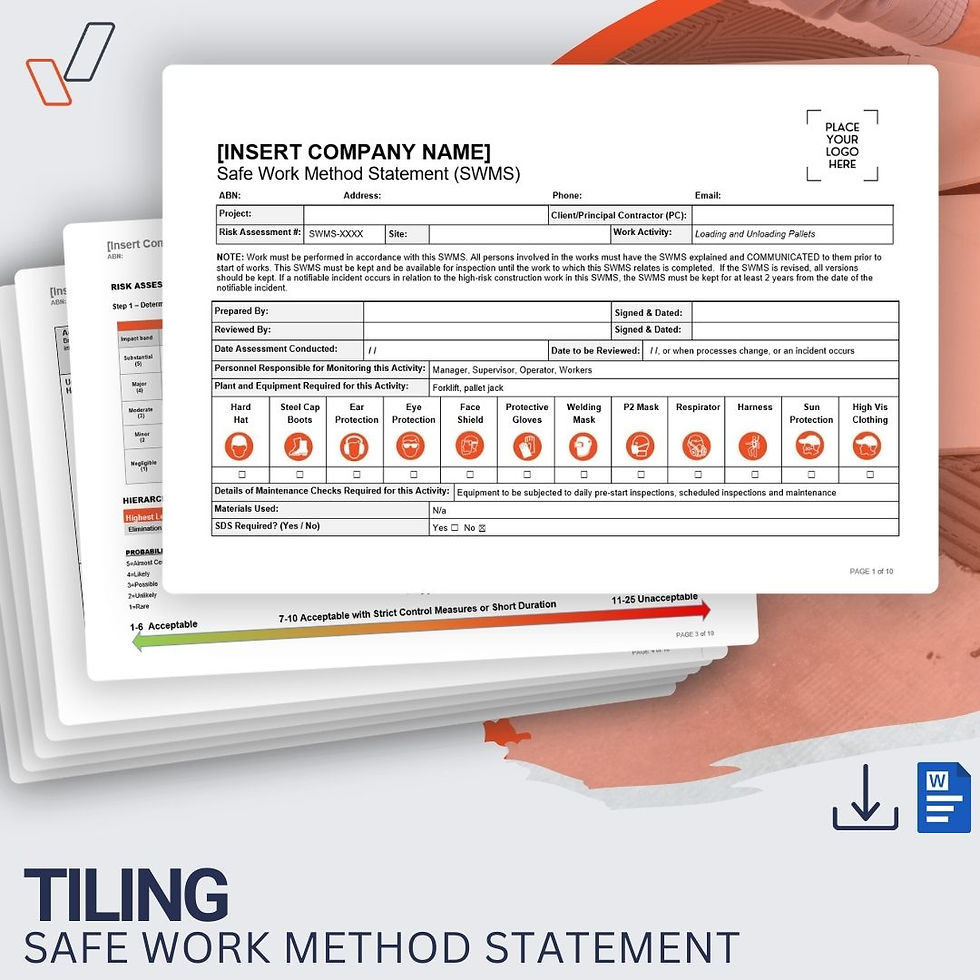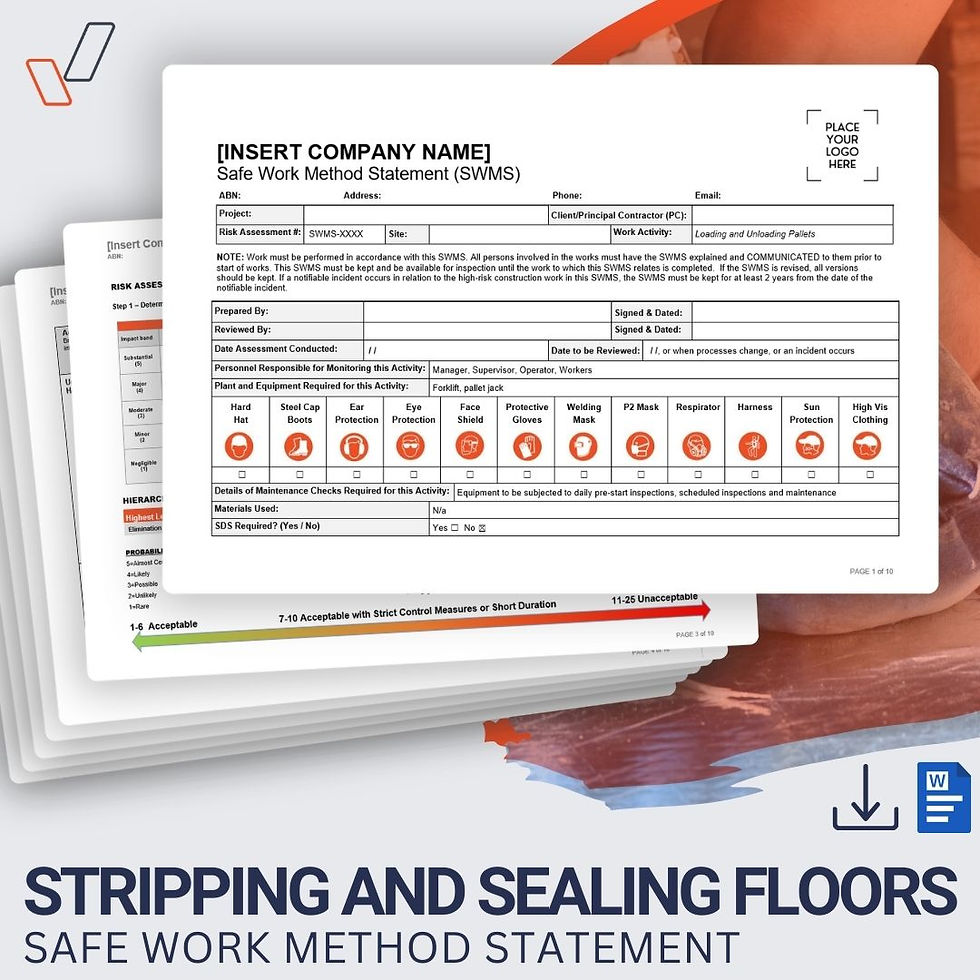This 11-page Operation of Trucks Safe Work Method Statement (SWMS) provides the typical safety controls and potential hazards associated with the operation of trucks on and off-site.
It’s pre-filled, ready to use, and developed by WHS professionals to help you meet your WHS obligations and demonstrate a proactive approach to managing high-risk work.
This editable document is suitable for use in all Australian states and territories and can be easily customised with your company’s name, logo, and project-specific details.
Who This SWMS Is For
Transport & logistics companies
Civil construction businesses
Infrastructure and road maintenance contractors
Earthmoving and excavation services
Warehousing and distribution centres
Any business that uses trucks, floats, or trailers on worksites
What This SWMS Covers
Arrival on site and ensuring site access permissions and planning are in place
Pre-start risk assessment and truck/trailer selection based on site needs
Conducting a pre-operational vehicle inspection (tyres, brakes, steering, lights, fluids, etc.)
Pre-work discussions with site supervisors to assess terrain, loading areas, and personnel impacts
Safe loading procedures using spotters, no-go zones, and load restraint
Climbing into cabs safely (manual handling precautions and 3-point contact)
Truck operation on public roads and worksites, including speed control, visibility, and traffic plans
Driving in inclement weather and remote locations with wildlife hazard protocols
Isolation procedures when unloading or parking on-site
Emergency response procedures including contact protocols and equipment use
Managing communication issues (e.g. UHF failure)
Truck maintenance (daily checks, logbooks, manufacturer servicing)
General housekeeping and loose object management in the cab
Responding to changing site conditions and unknown hazards
Incident and injury reporting and emergency contact procedures
What’s Included in Your Template
High Risk Construction Work (HRCW) Selection Table
Risk assessment guidelines and risk rating calculator
Step-by-step safety procedures
Comprehensive list of potential hazards and control measures
PPE requirements
Plant and equipment checklist (e.g. trucks, trailers)
Site-specific risk register
Relevant legislation, codes of practice, and standards (editable placeholder)
Worker sign-off page with qualification and licence verification fields
This SWMS template for Operation of Trucks is an invaluable tool for quickly and effectively documenting your WHS systems. Designed for swift editing and customisation, it adapts easily to your operational needs - making it an essential part of your safety management toolkit.
Get your Operation of Trucks SWMS today and start using it instantly! Save time, stay safe, and help your business stay compliant with our expert-developed templates.
Operation of Trucks SWMS
We accept the following payment methods:
➡️ Pre-filled and ready to use
➡️ Created by WHS experts, aligned with Australian WHS legislation
➡️ Suitable for all Australian states and territories
➡️ Fully editable Microsoft Word format
➡️ Instant delivery via email
➡️ Free list of relevant legislation & codes of practice (valued at $19.95)
➡️ Easy customisation instructions included
➡️ Pay once, use it as many times as you need
➡️ 12 months free phone and email support


















